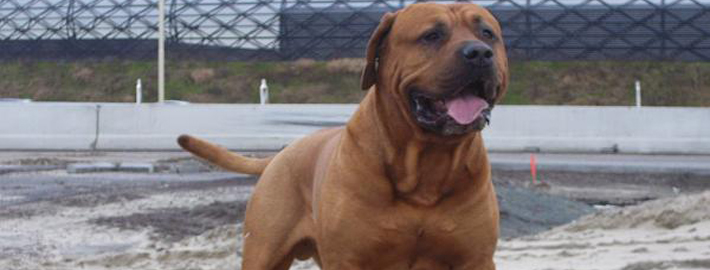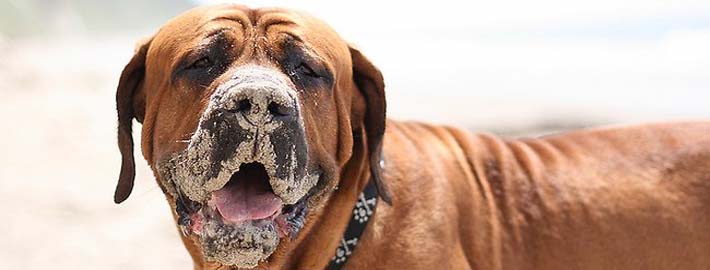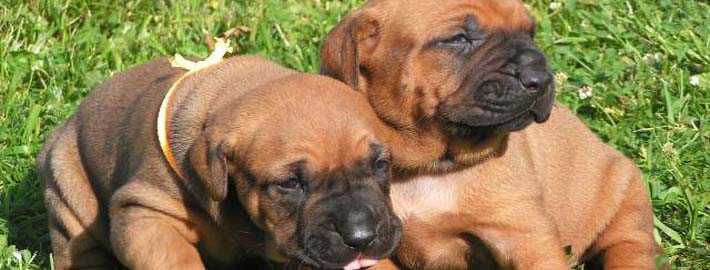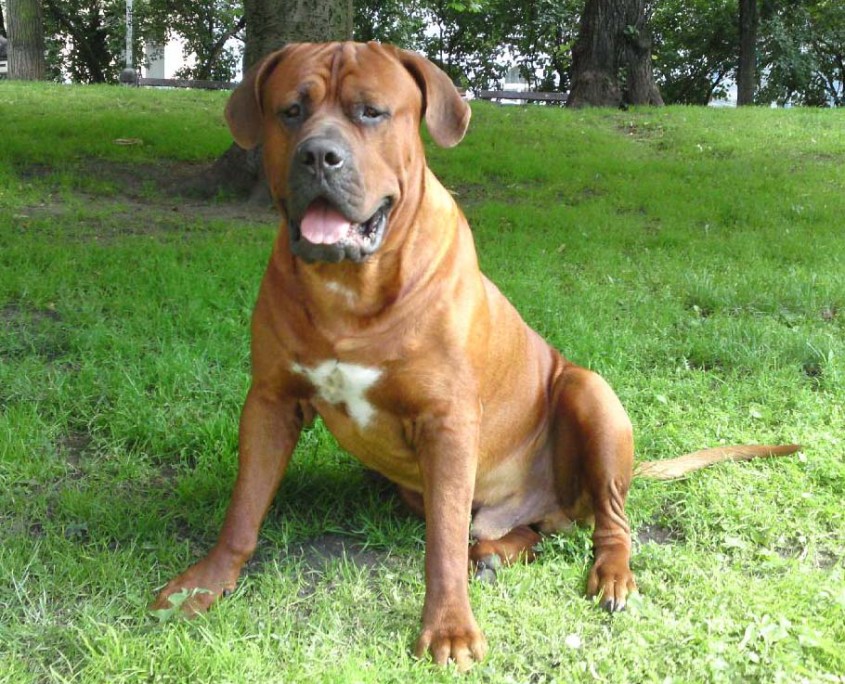What makes the Tosa Unique?
Known as the canine ‘sumo wrestler’, this Japanese breed is rarely found outside its home country.
Breed Groups
Page Contents
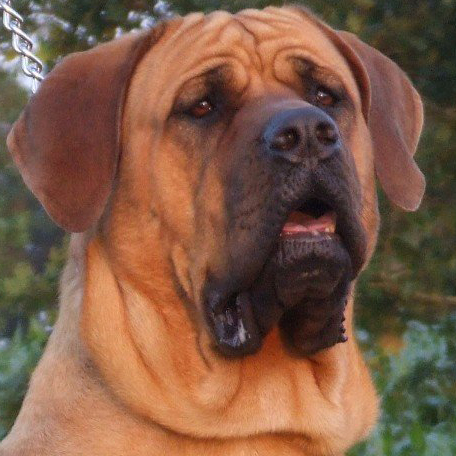
SnapShot
| Size: | Males – 55 to 60 cm (22 to 24 inches) Females – 55 to 60 cm (22 to 24 inches) |
| Weight: | Males – 37½ to 90½ kg (83 to 200 pounds) Females – 37½ to 90½ kg (83 to 200 pounds) |
| Origin: | Japan |
| Life Span: | 9 – 13 Years |
| Colour: | Black, Dark Brown / Chocolate, Light Brown / Golden |
| Litter Size: | 2 to 9 puppies |
Is the Tosa Right For You?
Members of this breed that have been correctly brought up will get along just fine with other pets. Those that have been raised alongside older children will likewise make good companions for them. Even so, rough-housing should be avoided because these dogs may find it too much like fighting and they play to win. Due to their large size, members of this breed should also be avoided by families with small children since the youngsters in question could easily be knocked over or accidentally injured during playtimes.
In 5 Words
- Suspicious
- Fearless
- Loyal
- Brave
- Intelligent
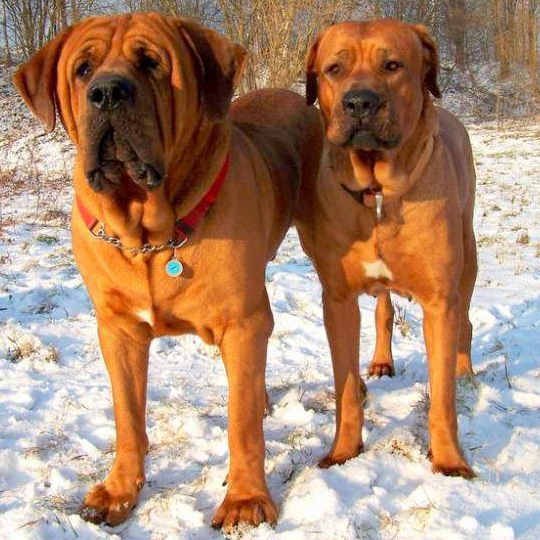
Characteristics
Learn About the Tosa
Description
General Description
Tosa Inus are massive dogs with elegant features. They have large heads that come to a short stop and powerful jaws. A square shaped and somewhat lengthy muzzle is yet another breed feature. Their necks are muscular in appearance and have a pronounced dewlap. Members of this breed additionally possess sizable, black noses and teeth that meet in scissors bites. Tosa Inus have small, dark brown eyes. Miniscule, high-set ears can also be found on members of this breed. These appendages hang close to the head of the animal in question. Tosa Inu have dark toenails on their well-cushioned feet. These dogs additionally possess tapered tales that uncurl when they are at ease.
Size
Members of this breed customarily range from 80 to 135 pounds (36 to 61 kilograms) in weight. However, breeders from countries other than Japan have been focusing on larger animals which are between 130 and 200 pounds (60 and 90 kilograms) in weight and are between 24.5 and 32 inches (62 and 83 centimeters) in height.
Coat
Tosa Inus have thick coats that are short in length and coarse in texture. These dogs come in a variety of hues including apricot, fawn, yellow, black, red, and brindle as well as black and tan. Members of this breed can be solid or multicolored. Some individuals may also have a black mask on their face. However, the American Kennel Club only recognizes fawn, brindle, red, and black dogs as well as those with white markings.
Short History of the Tosa
For centuries, Tosa Inus have been bred for the sole purpose of dog fighting, a sport that has a very long history in Japan. These dogs first came into being sometime between late 19th century and the first few decades of the 20th century. At this point in time, Shikoku fighting dogs and Kochis were crossed with large Western breeds such as Mastiffs, Great Danes, German Pointers, Bulldogs, and St. Bernards. Despite the fact that dog fighting has since been outlawed in much of the civilized word, smaller versions of this breed are still used in secret for that particular purpose. After all, these dogs have had centuries to perfect the art of Japanese style combat, where the participants are supposed to be both quiet and courageous in the arena.
This is perhaps a contributing factor as to why the breed is often viewed as being a potentially dangerous one. Although Tosa Inu are certainly not recommended for amateur dog owners, properly trained animals can make excellent family pets as well as superb watchdogs and estate guardians. Even so, these dogs are rarely seen in their homeland, much less anywhere else. They have only recently made their way to the United States where they recognized by the American Kennel Club (AKC) in 1997 as part of their foundation’s stock service.
Temperament
Bred for their skills in silent fighting, members of this breed also make excellent guard dogs. After all, they are protective and courageous animals. However, Tosa Inus need proper leadership, early socialization, and obedience training from their puppyhoods in order to be at their best. Members of this breed that have been correctly brought up will get along just fine with other pets. Those that have been raised alongside older children will likewise make good companions for them. Even so, rough-housing should be avoided because these dogs may find it too much like fighting and they play to win. Due to their large size, members of this breed should also be avoided by families with small children since the youngsters in question could easily be knocked over or accidentally injured during playtimes.
Caring for Your Tosa
General Health
These dogs are fairly health and not prone to many ailments. Bloat can be a potential problem for members of this breed, but that is the case with all large dogs. The best way to avoid this issue is to feed the dog in question several small meals per day rather than one large one. That way the dog’s body can effectively process the amount of food it receives at a given time without suffering any unfortunate side effects.
Care
Daily
All dogs need exercise on a daily basis.
Weekly
Dogs should have their teeth cleaned on a regular basis with vet approved products to keep them in good oral health.
Monthly
Tosa Inus will need to be given parasite prevention medications about once a month to keep harmful pests at bay.
Grooming & Bathing
Members of this breed aren’t heavy shedders and, as a result, they only need an occasional brushing to keep their coats looking tidy. While Tosa Inus do drool under certain circumstances, they don’t produce as much spit as other mastiff type breeds. Regular pet care such as toenail clipping, ear cleaning, and baths should also take place on an as-needed basis.
Exercise & Training
These dogs are not for amateur pet owners. Instead, members of this breed need their human leaders to display a natural sense of authority. Their training must also start early, preferably before the puppy in question is 2 months old since waiting until the animal is question is older mean that pet owners will have a larger undisciplined dog to try to manage. However, these dogs can take up to four years to leave their puppy days behind.
The lessons themselves must be handled by someone with experience in teaching other dogs and gaining their respect. All the same, members of this sensitive breed will react to the tone of one’s voice so lessons must be managed in a calm but firm way. Consistent rules also go far with members of this breed. Early socialization is just as important at keeping the animal in question from becoming unruly.
Problems with Tosa Inus are normally the result of bad instruction and handling methods. Owners should never allow the animal in question to believe that it is the one in charge. They should also be sure to give members of this breed appropriate amounts of exercise and mental stimulation to keep the dog in question from getting into trouble.

